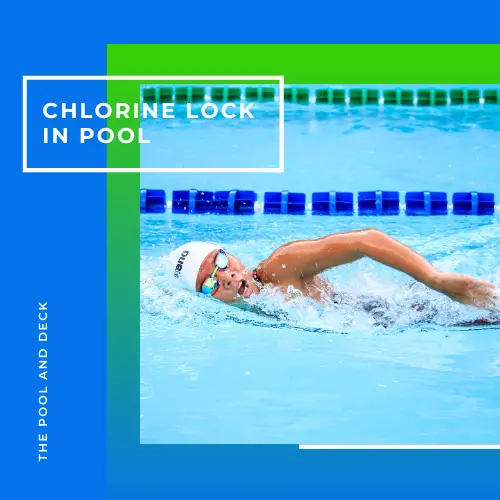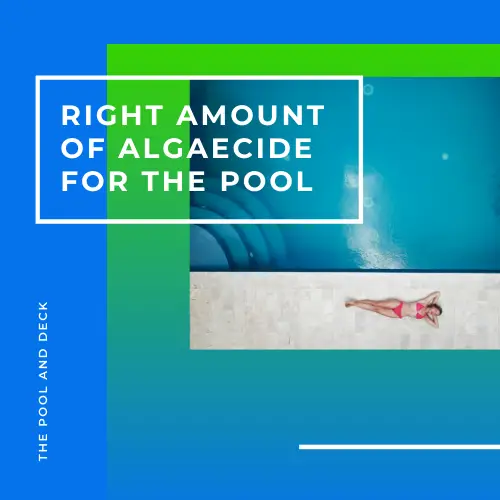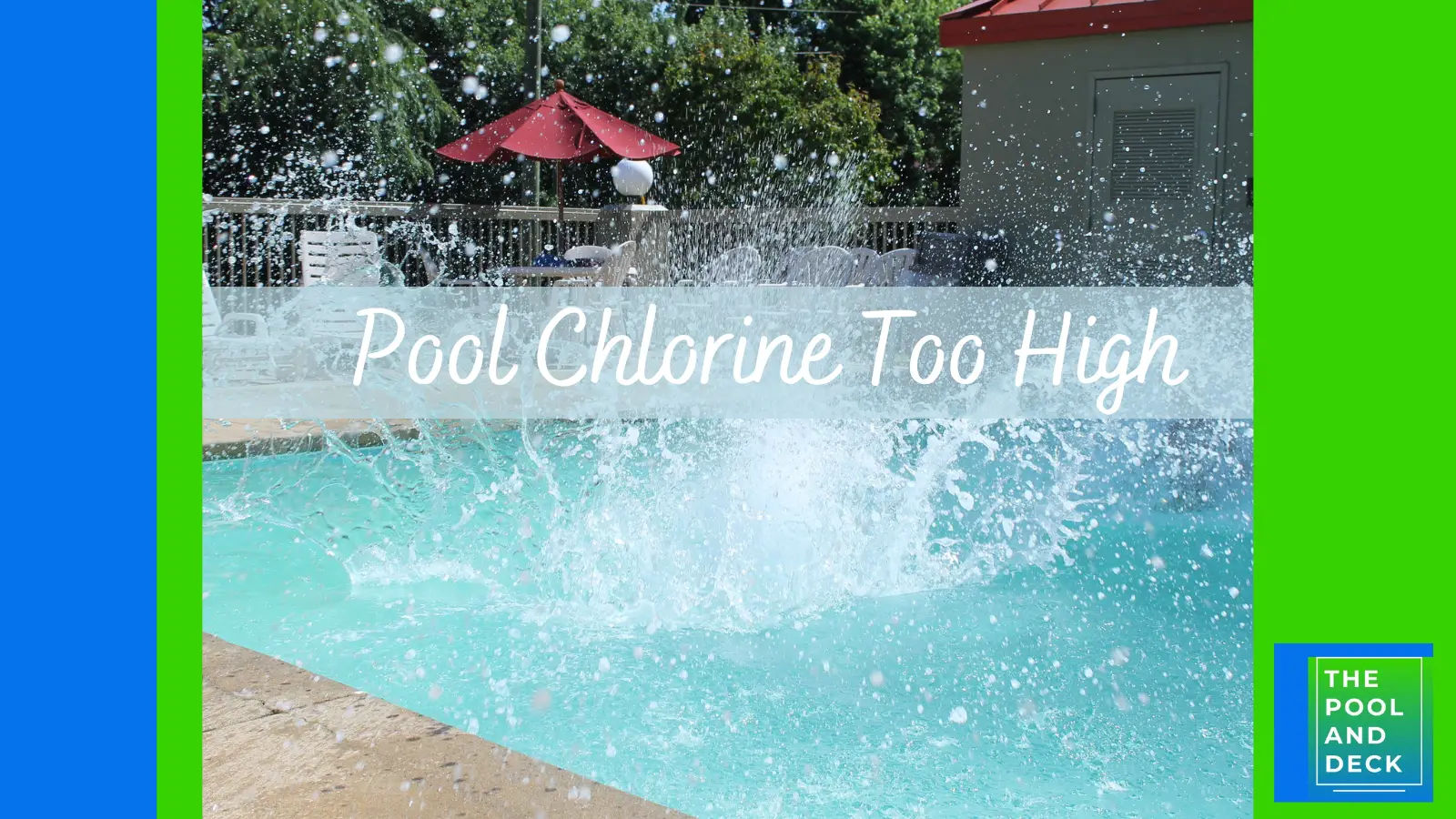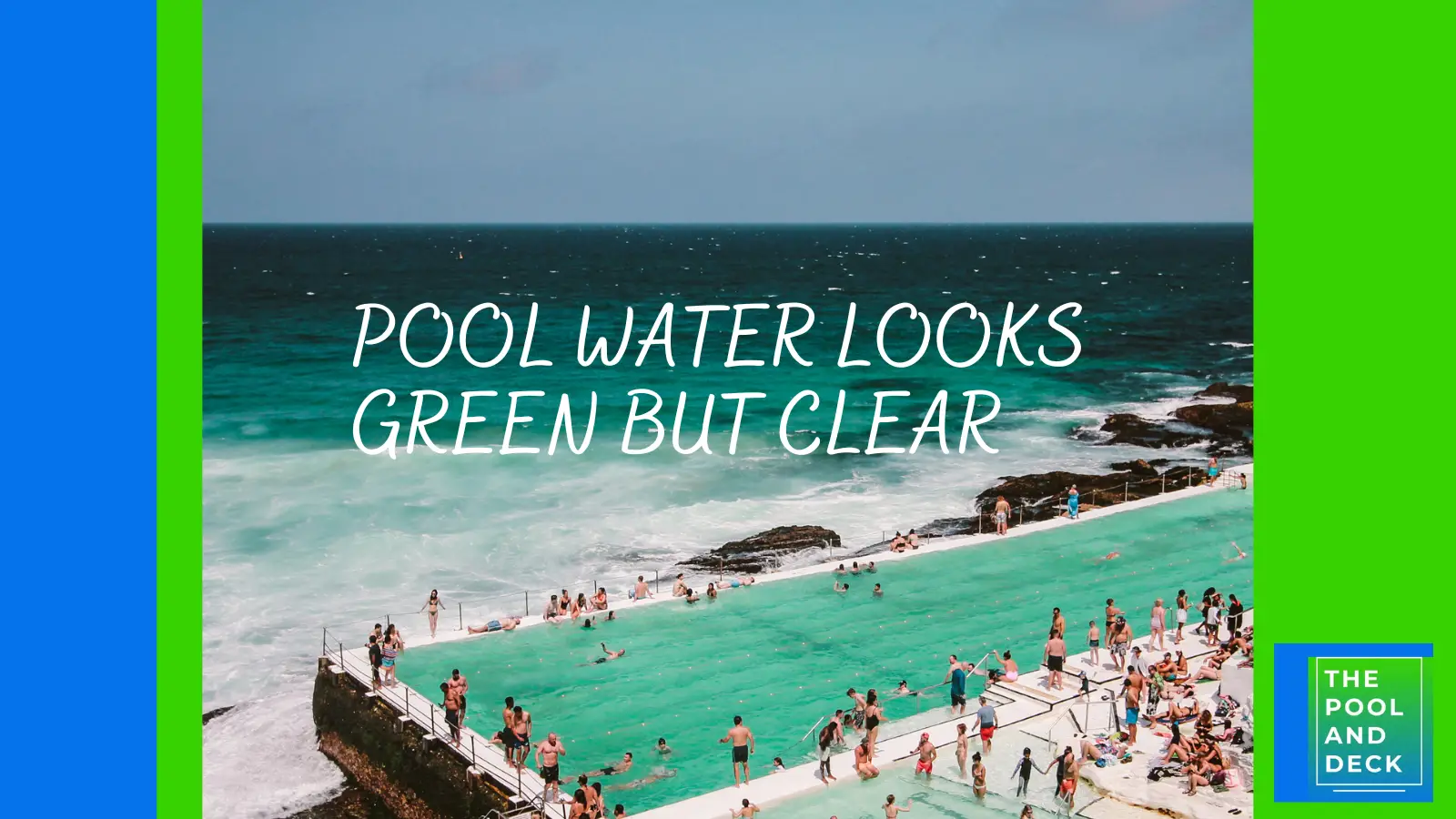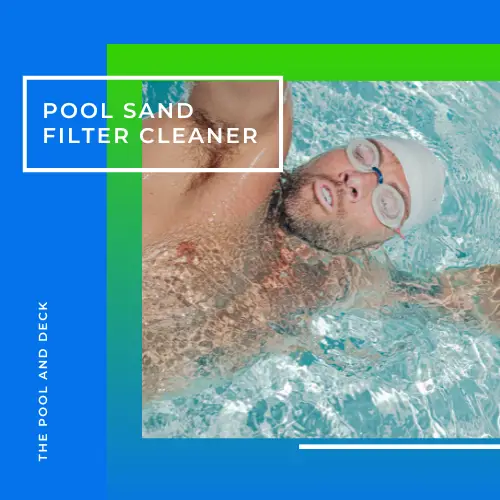How Often Should Pool Filters Be Cleaned? (All You Need To Know!)
As an Amazon Associate, I earn from qualifying purchases.
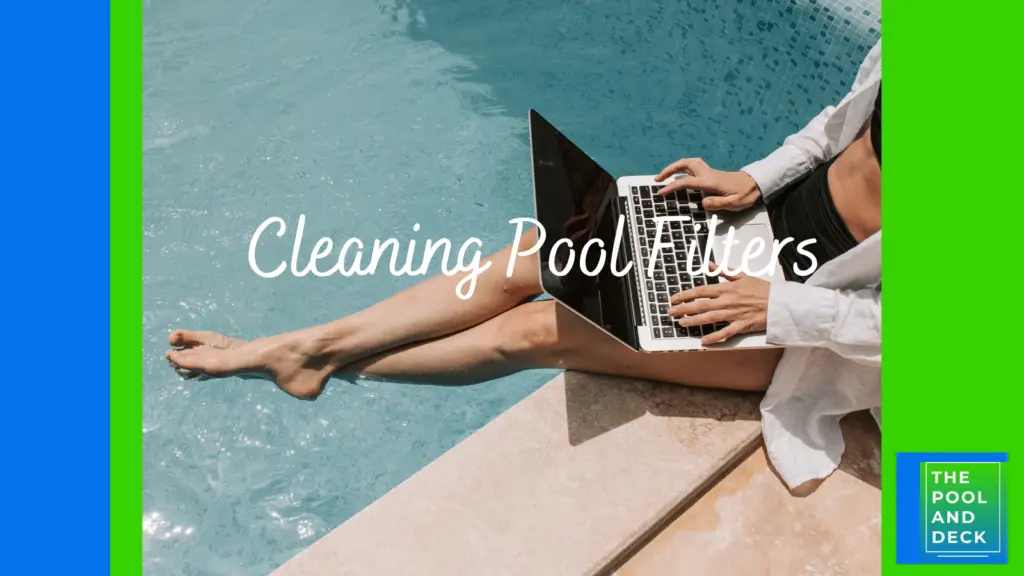
Table of Contents
How Often Should Pool Filters Be Cleaned?
Your pool’s filtration system, consisting of a pump and filter, works by pumping dirty water to the filter, which then cleans and returns it to the pool. But when and how often should you clean the filters?
The table below is a quick guide to when, how and how often should pool filters be cleaned.
| Pool Filter Type | Debris Size Filtered | When To Clean (pressure gauge reading) | How To Clean | How Often To Clean | Change the Medium Every |
| Sand | 20-40 microns | 10 psi above normal | Back-wash | Once every Week | 5-7 years |
| Cartridge | 10-15 microns | 10 psi | Hose Wash | Once in 2-4 weeks | 3-5 years |
| DE | 2-5 microns | 10 psi above normal | Back-wash | Once in 4-6 weeks | 10+ years |
You can use the above table as a reference for how often pool filters should be cleaned. However, there is more! For more detailed and complete information, go ahead and read this post.
In this post I explain the working of the different types, including how often pool filters should be cleaned. I also explain the detailed cleaning process for best results.
There are a few tips too that will save you effort, time and money, when pool filters are cleaned.
What Types of Pool Filters are There?
There are three types of pool filters that may be used in in inground backyard swimming pool. All three types work on the same basic principle. The difference is in the` material of the filter.
The three types are:
- Sand Filters
- Cartridge Filters
- DE (Diatomaceous Earth) Filters
Each has its pros & cons but any of the three will get the job done.
How Does a Sand Pool Filter Work?
As the name suggests, a sand pool filter uses sand to filter and trap the debris as the water is pumped through it. A canister contains the sand.
Of course the sand is not any ordinary sand. The cheapest option is #20 pool filter silica sand. You can also use sand pool filters with costlier options such as “zeolite” or “filter glass”.
The sand filter is a canister with a valve to control flow of water. The canister is 2/3rds full with sand. The dirty pool water is pumped into the canister through the valve and a diffuser. Sand pool filters are rated to capture debris between 20-40 microns.
Water flows through the sand with ease, while the larger debris particles are trapped in the sand. The clean water returns back to the pool.
But the direction of the water flow depends on the brand and model too. For example in the Hayward Pro Series Pool Sand Filter, even water distribution over every square inch of sand is ensured by an integral top diffuser, self-cleaning under drain and 360 degree slotted laterals.
How Often Should a Sand Pool Filter Be Cleaned?
With time, the sand begins to plug up with the debris. Actually, this improves the filtration efficiency as the pores get smaller. Of course, it takes more pressure to push the pool water through the filter unit.
The normal pressure gauge reading is usually between 10-20 psi, when the sand is clean. You should backwash your pool sand filter when the reading goes up by 10 psi above the normal.
The clogged up sand in the sand filter is cleaned by an inbuilt mechanism known as backwash.
During backwash the filtration process is reversed. Clean water is pumped back through the sand in the pool sand filter. The dirty water is released in the lawn or the drain.
For example in the Hayward Pro Series Pool Sand Filter, comes complete with the tank, a 7-way multi-port valve, sight glass and pressure gauge.
The 7-way Valve Positions are Filter, Waste, Winter, Closed, Backwash, Recirculation and Rinse.
Hayward Pro Series Pool Sand Filter
- Durable corrosion proof materials for dependable all weather performance
- Large pressure sand/water drain for rapid winterizing or servicing
- Side-mount models are available with 6-position VariFlo or 2-position slide valve
How Does a Cartridge Pool Filter Work?
A cartridge pool filter is more expensive than a sand pool filter. Both cartridge and sand need to be replaced, once they have lasted their specified life. The cartridge is also more expensive to replace than sand.
However, a cartridge pool filter has several advantages over the sand pool filter.
- The pump requires less power
- It is easier to clean a cartridge filter
- You do not lose pool chemicals during the cleaning process
The cartridge filter works on the same principle as a car air filter.
The cartridge is made from a spun, bonded polyester, fan folded filter. The cartridge is slim and the cartridge pool filter has a smaller footprint.
Cartridge filters are rated to trap debris between 10-15 microns. Some cartridges (Microban) can also trap microbes.
Should you be interested in buying a cartridge pool filter, you can check out Hayward W3C4030 SwimClear Cartridge Pool Filter available on Amazon. A range of sizes, to suit pools of different sizes are available.
How Often Should a Cartridge Pool Filter Be Cleaned?
The greatest advantage of a cartridge pool filter over both sand and DE filters is that it does not use the backwash method for cleaning. The cartridges are removed from the filter housing and cleaned with a normal garden hose.
For example the Hayward StarClear Cartridge Pool Filter has cleanable cartridge elements. This eliminates the need for backwashing.
Hayward W3C12002 StarClear Plus Cartridge Pool Filter, 120 Sq. Ft.
- The Hayward StarClear Plus 120 sq. ft. pool filter features an extra-large single-element cartridge for additional durability and maximum water flow
- Single-knob design securely fastens filter head to tank without clamps or bolts
- Single-piece injection molding for base and body provides added strength for reliable, corrosion-free performance
- Filter head rotates for easy access to the cartridge, gauge and manual air relief valve
As a result the expensive pool chemicals in the pool water are conserved and you can save a fair amount of money.
With a cartridge pool filter, you do not need too much water pressure when the filter is clean. With time the cartridge keeps trapping more and more debris. The pressure required starts to increase.
It is time to clean the cartridge once the reading on the pressure gauge hits 10 psi. Take out the cartridge and use the garden hose to wash it clean. Using a nozzle to build up the pressure in the water jet will certainly help.
Cartridge Rejuvenation
Sometimes a simple cleaning by a garden hose may not be enough. In that case you will have to use a process known as “cartridge rejuvenation”.
In this process, you must soak the cartridge overnight in a bucket full of water and “cartridge cleaner”. You can try “Power Soak Spa & Pool Filter Cartridge Cleaner” from Amazon, but most brands should do the job.
The “cartridge cleaner” helps in removing oils and mineral deposits on the cartridge. The cartridge will look as good as new.
The cartridge will usually last between 1-3 seasons. After that you should replace the cartridge with a new one. Stick with the same brand as the original.
How Does a DE Pool Filter Work?
Diatomaceous Earth (DE) Pool Filters are the top of the line. DE Filters have the best performance. They can filter out really, really small particles (2-3 microns).
Just so you know, pool algae is between 8-14 microns. Sand or cartridge pool filters can not trap pool algae. The algae will go through the filters and come right back into your pool.
But a DE pool filter can trap pool algae.
DE pool filters are the most expensive filtration option. Not only is the initial cost high, the cleaning and general maintenance cost is much higher than sand or cartridge pool filters.
There is a DE Grid, made of a woven polyester, inside every DE pool filter. The grid does not do the filtering. It is just the base on which the DE cake is attached. The DE does all the filtering.
What is DE?
DE is mostly made up of silica, just like sand. However, DE is very fine because the source is the fossilized remains of dead algae.
Diatomaceous earth is a type of powder made from the sediment of fossilized algae found in bodies of water.
WebMD
Should you be interested in buying a DE pool filter, you can check out Hayward W3DE6020 ProGrid Diatomaceous Earth Pool Filter available on Amazon. A range of sizes, to suit pools of different sizes are available.
If you do install a DE pool filter, you will have the cleanest pool in the neighborhood. You would need to use less pool chemicals too!
How Often Should a DE Pool Filter Be Cleaned?
In many ways a DE pool filter is similar to a sand filter. (The main difference is the particle size of the medium). So, a DE filter is also cleaned by the process of backwashing, just like a sand filter.
Similar to a sand filter, it is time to backwash when the pressure gauge reading is 10 psi over the normal reading. Normal reading is the psi reading of a new or just cleaned DE filter.
The DE pool filter needs to be backwashed very few times during a season. It is so efficient that your pool is crystal clear for longer durations.
DE Replenishment
The similarity between cleaning a sand filter and a DE filter ends after the backwash. Unlike a sand filter, a DE filter loses most of the medium (that is DE powder) in the backwash. So you need to replenish it.
Add DE to the pool filtration system through the skimmer. The quantity of DE replenishment should be around 80% of the DE quantity in a full DE pool filter.
The DE Grid will need to be cleaned once every year. With proper cleaning & maintenance the DE Grid will last for 10 years. Possibly longer!
Useful Tips on Backwashing
The downside to backwashing a sand or DE pool filter is that you lose pool chemicals along with the dirty water. To minimize this loss
- Backwash only when really necessary
- Do not backwash soon after putting in the pool chemicals
- Best is to backwash first and then add the pool chemicals
Thank you very much for reading the post. I do hope you found it informative and helpful.



